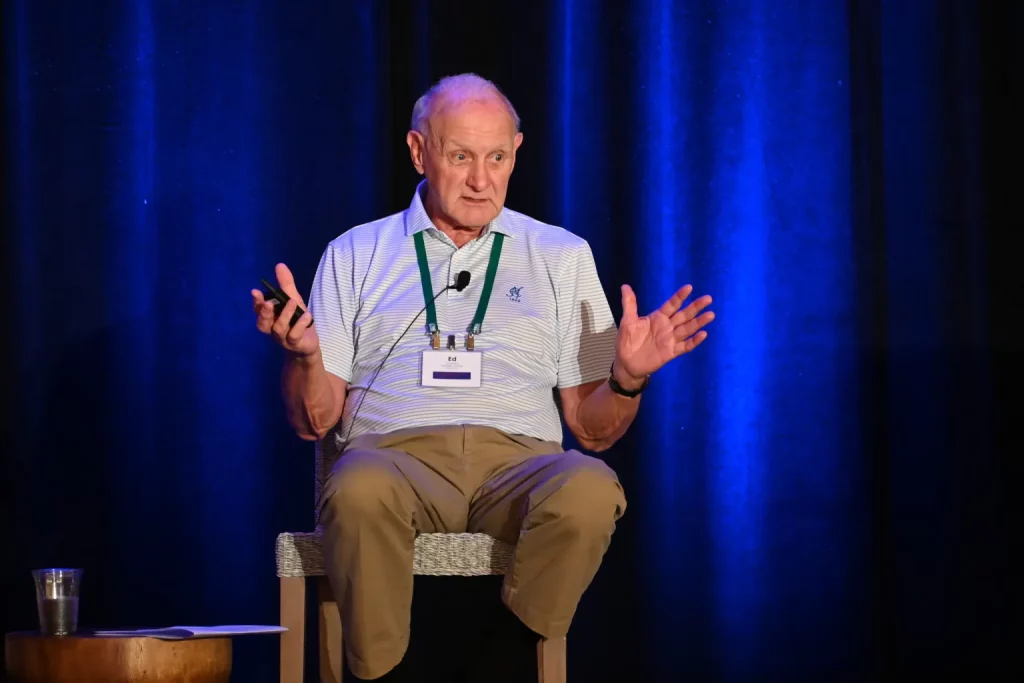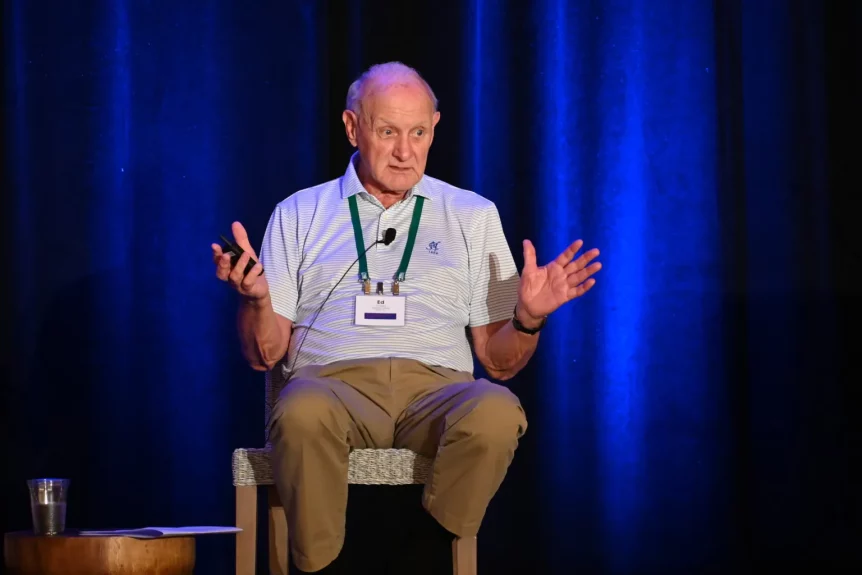
By Frank Giles
The Florida Agricultural Financial Management Conference returned in late September after several years of hiatus. The event was held at the Margaritaville Resort in Kissimmee.
Ed Seifried, professor emeritus of economics and business at Lafayette College in Easton, Pennsylvania, was a featured speaker. The well-known economist provided several macroeconomic observations about the current financial standing of the United States.
Reasons for Tariffs
One of the biggest economic stories of the year has been the Trump tariffs. Seifried stated that, from a purely economic standpoint and based on most schools of economic thought, he does not favor tariffs. However, he cited three financial reasons why Trump has made tariffs a central part of his economic agenda:
- It is a mean world out there. Our adversaries are playing hard ball, and conflicts are always a threat.
- In this global environment, the United States does not want to depend on foreign countries, especially adversaries, for critical goods like weapons, medicine or key raw materials such as aluminum and titanium. Thus, the tariffs are meant to encourage domestic production. “There are sectors critical to our economy that need protection,” Seifried said.
- If a country imposes a tariff on American goods, the United States should respond in kind. “If a country puts a tariff on our agricultural products, we should do the same to them,” Seifried noted.
Market Disruption
Beyond these reasons, Seifried emphasized that tariffs are generally detrimental and disrupt markets. “In April, Trump announced a 90-day delay on tariffs,” he said. “The next day, the stock market recorded its highest rise in history. What does that tell you about tariffs? The market hates them, too.”
Then, in October, the United States and China exchanged barbs over rare earth minerals, and Trump countered with 100% tariffs on top of the 30% existing tariffs. The Dow dropped by 879 points on Oct. 10, the day Trump made the retaliatory threat. But the market bounced back after he offered a more reconciliatory tone.
The tariff threat has prompted countries, including Japan and the European Union, to negotiate individual trade deals. Seifried noted that, so far, consumers have not felt the tariffs’ impact too heavily. And inflation has not been overly triggered by the tariffs. However, he cautioned that history shows the burden of tariffs ultimately falls on consumers in the long run.
Seifried also provided a long-term outlook for economic growth, drawing from multiple sources. He described the outlook as not negative but tempered, with gross domestic product growth expected to range between 1.5% and 2% for the foreseeable future. A key theme of Seifried’s presentation was that the United States, blessed with the world’s largest economy by far, can absorb disruptions from inflation, trade battles and economic downturns far better than any other country.
SPECIALTY CROPS CALL FOR RELIEF
The trade disputes have had an impact on agriculture, especially row crops like soybeans that rely heavily on Chinese imports. In October, the president hinted at a $10 billion aid package for farmers, potentially funded by revenues from tariffs.
The Specialty Crop Farm Bill Alliance sent a letter to Trump asking that fruit and vegetable growers be included in any relief package. The letter noted: “Specialty crop growers continue to confront a host of unprecedented challenges. Rising input costs, overly burdensome regulations, limited access to labor, unfair trade practices by foreign countries, and natural disasters ranging from flood to drought have all impeded the global competitiveness of our growers. We greatly appreciate the steps your Administration is taking to fix each of these longstanding problems. However, it will take time for those efforts to bear fruit. In the meantime, our growers need a lifeline to stay afloat, and nothing short of the survival of our domestic industry is at stake.”
There is no doubt there will be much to watch on the economic and trade front as we close out 2025 and head into the new year.










